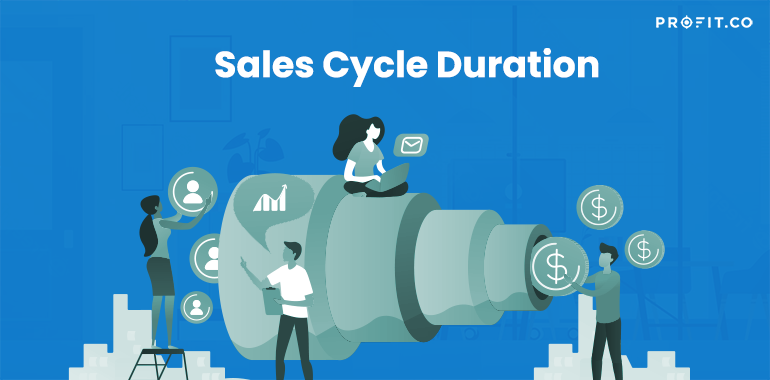The Sales Cycle Duration is a metric that, judging by its name, measures the total time between the initiation of a sale up until the actual final sale – basically, how long does it take for a sale to occur from the moment a sales team member has contacted a potential client.
This metric is extremely useful when determining your business’ efficiency in processing sales. Obviously, a shorter Sales Cycle Duration is sought after by many companies – as the customer is happier if the product/ service gets to him or her in the shortest time possible.
The Stages of the Sales Cycle
Depending on the type of business or on the type of product/ service that is being sold, the stages of a sale cycle can vary. For example, a big business might skip some steps when trying to sell its products/ services, just because it is quite reputed and does not necessarily need to prospect for customers.
However, there are some common stages that most businesses rely on when calculating the sales cycle duration; here they are.
Prospecting Stage – when the sales team is actively looking for potential customers, via phone calls or such.
Qualification Stage – when the sales rep determines whether a potential customer is fit for the service/ product they are trying to sell.
Presentation Stage – this is when the sales rep presents the product/ service he or she is trying to sell to the potential customer – given the fact that the latter is fit for those.
Decision Stage – in this stage, the sales rep will address and explain any of the potential customer’s objections.
Closing Stage – when the deal is sealed and the product/ service is sold.
Efficiently Measuring the Sales Cycle Duration
This is the hardest part when it comes to this metric because, as we mentioned, every business out there tries to have a shorter Sales Cycle Duration as possible – the question is when should a business start the timer.
For example, a lead might be in the system for quite some months before actually taking a step and contacting your business in order to buy your product/ service. This may provide you with inaccurate data regarding the Sales Cycle Duration because, for quite some time, the sales team did not actively communicate with the potential customer.
This is why most companies calculate this metric from the moment the actual conversation starts. This means that no e-mails and/ or other advertisement are taken into account – just the current conversation.
But, this also means that most of the data in regards to the Sales Cycle Duration will have to be entered manually in the system.
The Bottom Line
Taking into account the previously mentioned information, one thing is for sure – the way you measure the Sales Cycle Duration depends on your type of business. If you have an online store, then all of this data is recorded and stored automatically, from the moment a potential customer enters your website until he or she makes a purchase.
In an office or a retail shop, however, things start when one member of the sales team is actively having a conversation with one of the potential customers. You just have to find the method that fits your business the best.
